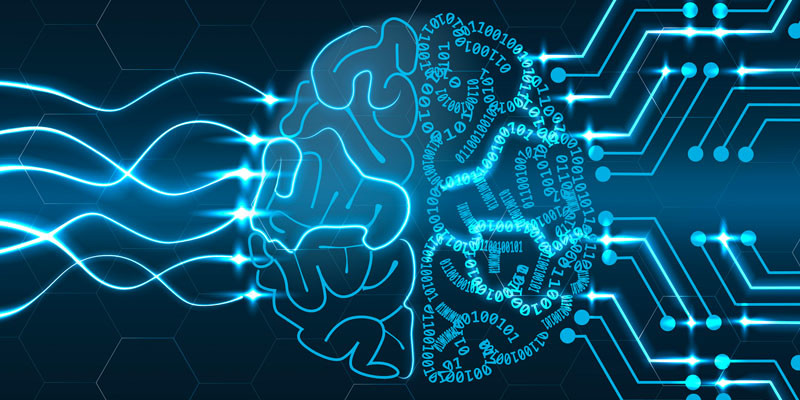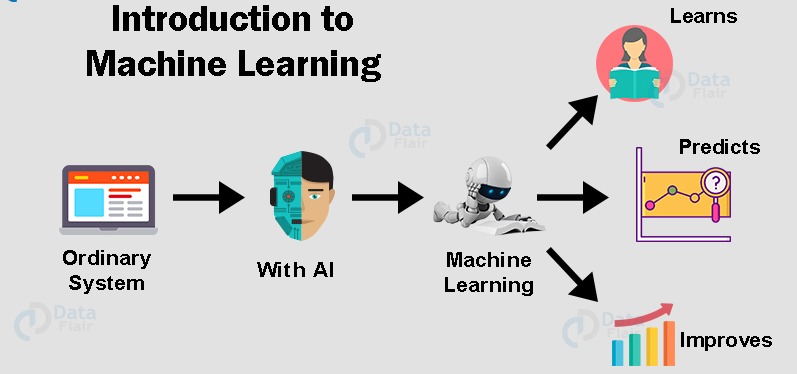Artificial Intelligence (AI) is rapidly changing the way we work and live. There are a lot of myths and hype around AI, Machine Learning (ML), and what they can do. So, let’s break down some walls and get a realistic view of them.
What is Artificial Intelligence (AI)?
There are many definitions of AI on the internet. So, let us try to dumb it down as much as we can without losing its essence.

To operate a traditional computer, the user has to give explicit instructions on how to do a task step by step for the desired result. But an AI-driven computer or an AI software, like the popular virtual assistants Alexa and Siri, can just be told what to do, rather than how to do a task. This can be achieved only when the entity that is being addressed to (in our case, the computer) has some degree of intelligence, which we call ‘Artificial Intelligence.’
According to a study by the McKinsey Global Institute, AI is estimated to create an additional USD 13 trillion of value annually by the year 2030. Although most of the value created by AI is currently in the software industry, the future of AI seems to have been rapidly growing outside of the software industry in retail, travel, logistics, and more. Can you think of an industry that AI will not impact in the next few years?
Breaking Down AI
Most people who are unaware of AI and its progress in the industry immediately picture things like the Hollywood movie Terminator and other evil robots. But that is a highly far-fetched idea compared to the ground reality. Here’s why.
AI can be broken down into two categories;
- Artificial Narrow Intelligence (ANI)
- Artificial General Intelligence (AGI)
Artificial Narrow Intelligence (ANI)
ANI is the realm of AI that refers to technology like smart speakers, self-driving cars, facial recognition software, product sorting in factories, and more.
Most of the progress that we see around us in our daily lives is in ANI.
Artificial General Intelligence (AGI)
Now, we might be entering the world of Hollywood.
AGI is the realm of AI where a computer or a robot can do almost anything that a human can do, if not more and better! However, the progress in this space has been minuscule due to its sheer complexity. Therefore, such days are likely hundreds, if not thousands of years away!
What is Machine Learning?
Let us go back to the definition of AI. So, in the previous section, you learned that AI essentially allows you to tell a computer what to do rather than how to do it. But how will the computer, a non-living thing, know how to execute a task in the first place? That is where Machine Learning (ML) jumps into the picture.

ML can be seen as a subset of AI. Machine Learning algorithms help an AI-driven system “learn” to do a task. For example, if an AI-driven robot knows to break open a peanut, the ML algorithms could help the robot learn to break open a walnut with the knowledge of breaking a peanut. It is how infants learn to run from their knowledge and experience of walking.
Supervised Learning
Supervised Learning is the most common type of Machine Learning, and it learns to produce an output B from an initial input A. Hence, this is also called ‘A to B Learning.’
Supervised Learning has been around for quite a while. It emerged in the 1960s and 1980s but never really kicked off. However, since AI is highly data-driven, data accumulation over the years has rendered even the simplest of ML, A to B mapping, extremely powerful and valuable to users. Did you know that AI has become so accessible that even you can figure out how to create AI software?
Some of the common examples for this include spam email filtering, speech recognition, machine translation, and online advertising.
Limitations of Artificial Intelligence and Machine Learning
The future of AI and ML is indeed very bright and exciting for all of humanity, but that does not go to say that AI is limitless, at least in the foreseeable future.
What AI and ML can and cannot do can be thought of in terms of what a human can and cannot do. So, if a person can do task A easily, then AI will be able to execute the task at record speeds and with great accuracy. On the flip side, if it takes a lot of brainstorming for a person to execute a task, then chances are that it is also a limitation of ML.
In a way, you may say that the limitations of humans are also amplified in AI along with their abilities. The majority of the limitations of AI come when it comes to generating insights and getting creative.
For example, a traditional AI system likely cannot produce a 50 or 100-page detailed market report. It can show analytics and infographics but will likely fail to produce a report as humans do.
Leveraging the Power of AI and ML for Companies and Enterprises
Data is power.
Large companies and enterprises thrive on piles of customer and audience data. Unfortunately, it is painstakingly difficult and financially burdening for organizations to compile, organize, store, and analyze all of this data manually.
The ideal solution for this is to use Software as a Service (SaaS) tools that bring the best of cloud storage and AI onto the same table!
So, what is cloud storage? In a nutshell, cloud storage is just like your office file cabinet or your hard disk, where you store your necessary data securely. The difference is that, instead of cabinets and hard drives, your data will be stored on huge servers, heavily guarded by your service provider in another part of the world, which you can access anytime and anywhere, without hassle!
SaaS tools help companies securely store all of their data on the cloud for the best privacy and accessibility to authorized users while leveraging the power of AI to quickly analyze gigabytes and terabytes of data and present it in a human-readable format.
Conclusion
Humans are on the constant lookout for convenience, and rightfully so. We love to do challenging things that are not only tiring but also exciting and intellectually stimulating.
Elimination of menial tasks that can be done by computers and robots opens up more opportunities for humans to indulge in more intellectually stimulating activities. Hence, AI is the logical next step towards efficient automation, and that is why AI is the future.
Machine learning is the core part of AI. Machines are trained to perform actions automatically like the friend suggestion on Facebook, the recommendations about a particular product on amazon.